4 x 5 - Brown Vintage Turkish Kilim Rug - 53854
4 x 5 - Brown Vintage Turkish Kilim Rug - 53854
Add Rug Pad
Only 1 left in stock: Shipping in 2-5 days
Rug Details
Delivery / Returns / Payment
Shipping Insured worldwide delivery. Most in-stock rugs leave our Dallas warehouse within 2 business days.
Returns Item must arrive in the original condition with tags attached. Return freight & insurance are the customer’s responsibility. We accept:
● 10-day returns for standard purchases
● 3-day returns for promotional-sale items
Refunds exclude outbound shipping & handling.
Payment Checkout online with all major cards, or call (214) 651-7847 to pay by phone. Checks are welcome; we ship once funds clear.
Trade Clients Qualified trade accounts may request rugs on approval—simply choose “Trade Approval” at checkout and we’ll arrange two-way logistics.
Care Instructions
● Vacuum with the beater bar off and always in the direction of the pile.
● Rotate 180° every 6 months for even wear and sun-fade balance.
● Blot spills immediately with a white cloth—never rub.
● Use a breathable rug pad to prevent slipping and fiber stress.
● Schedule a professional hand-wash every 3–5 years (sooner for high-traffic or pets).
Need in-depth guidance? See our full Rug Care Guide.
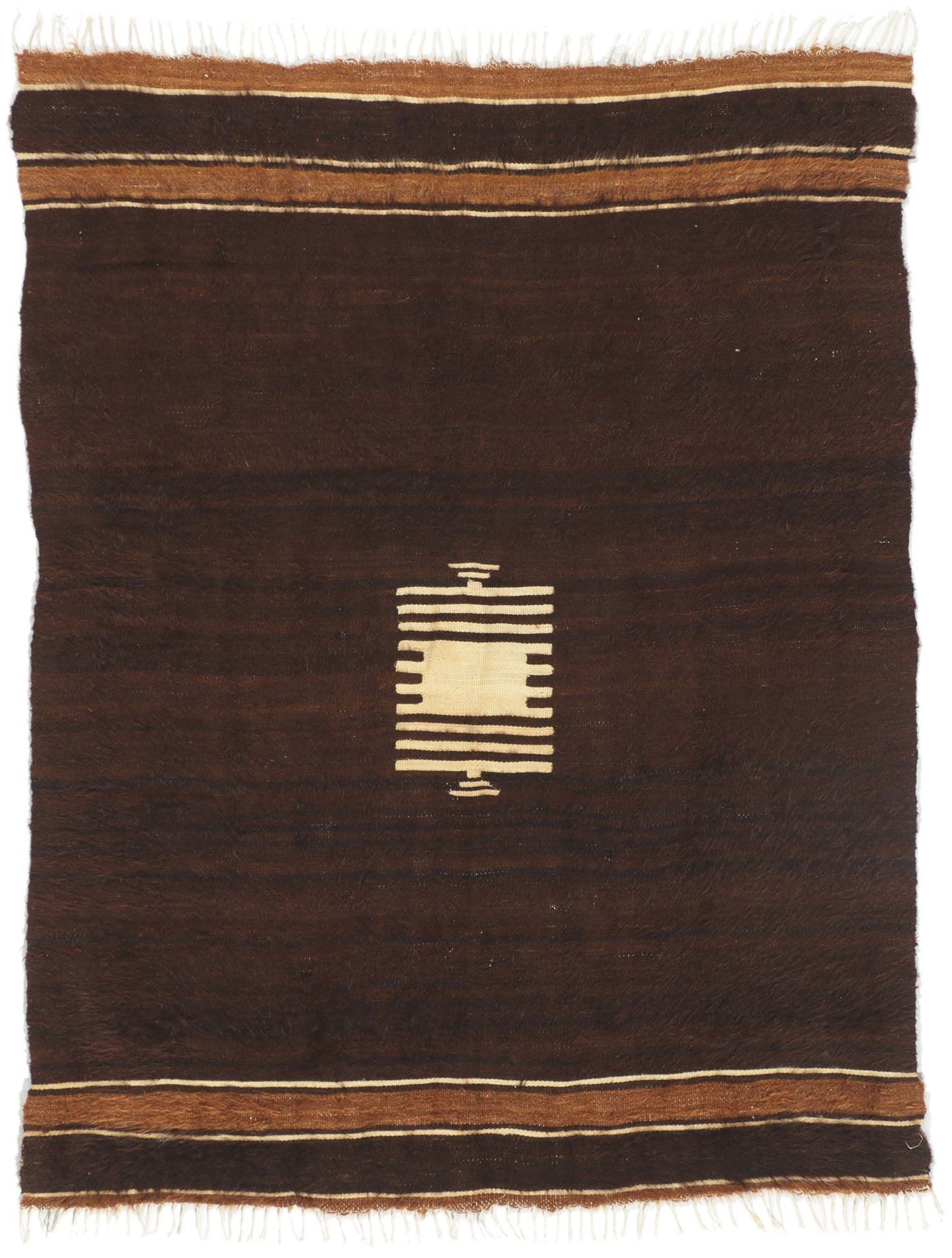
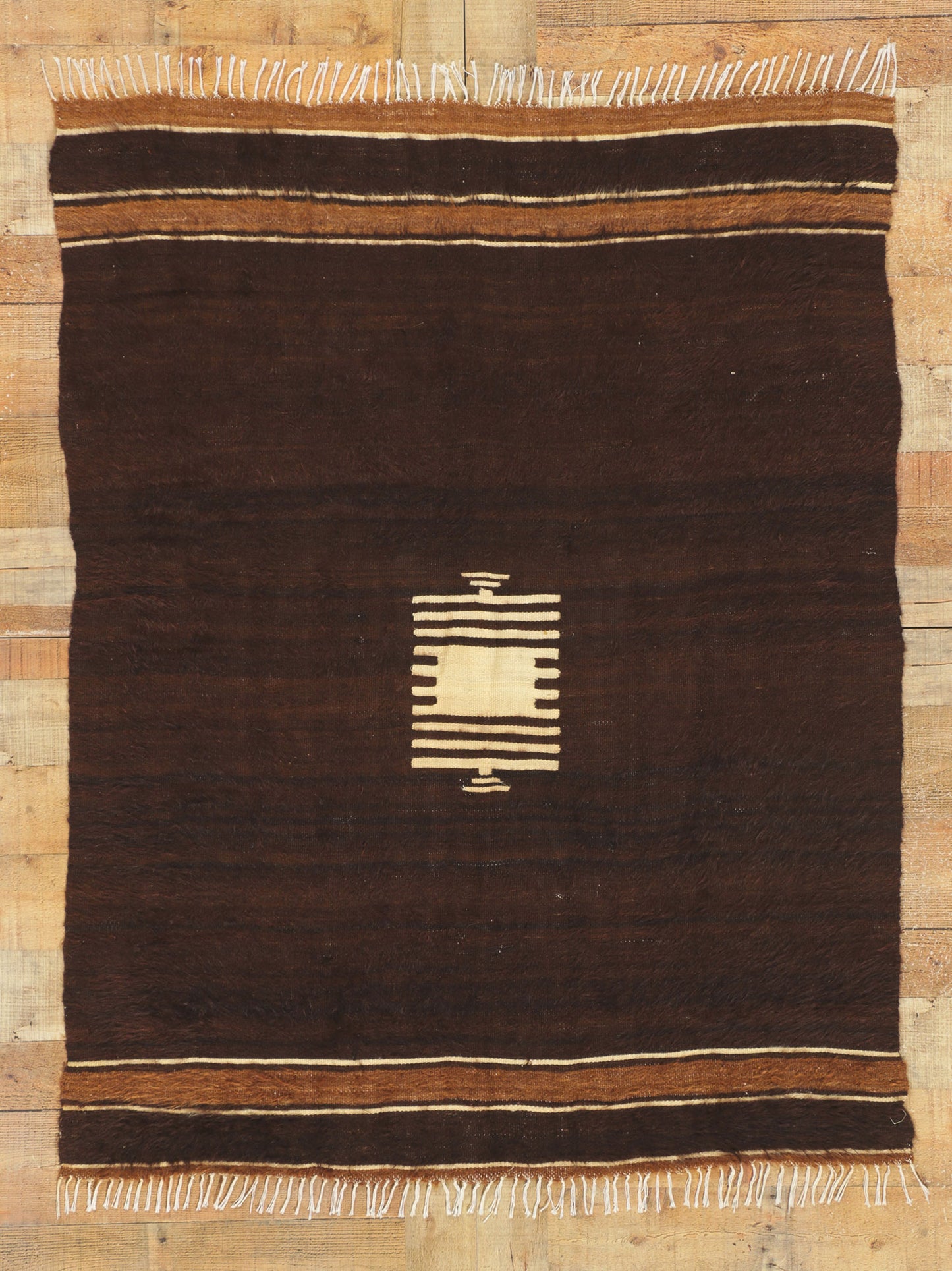
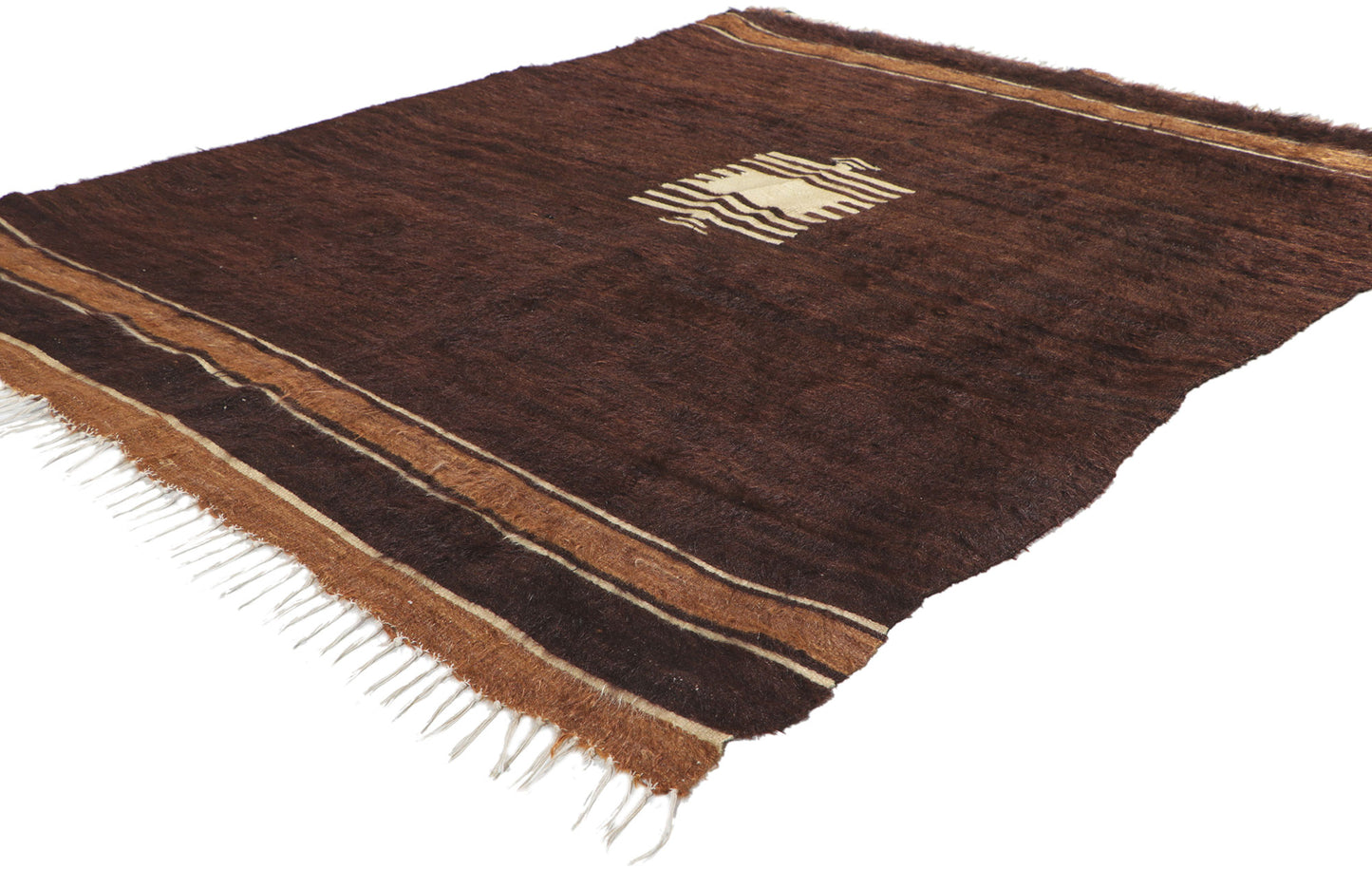
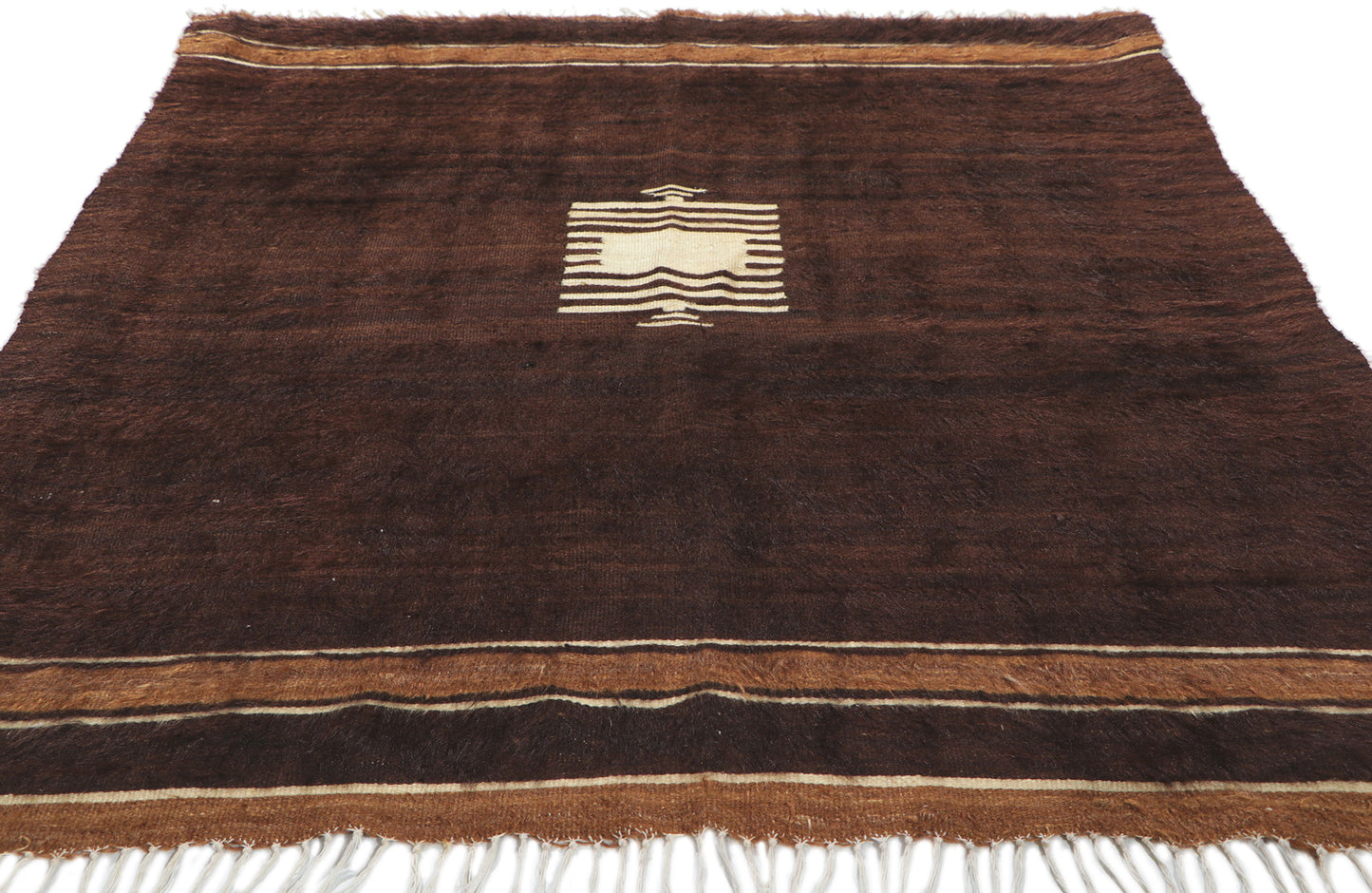
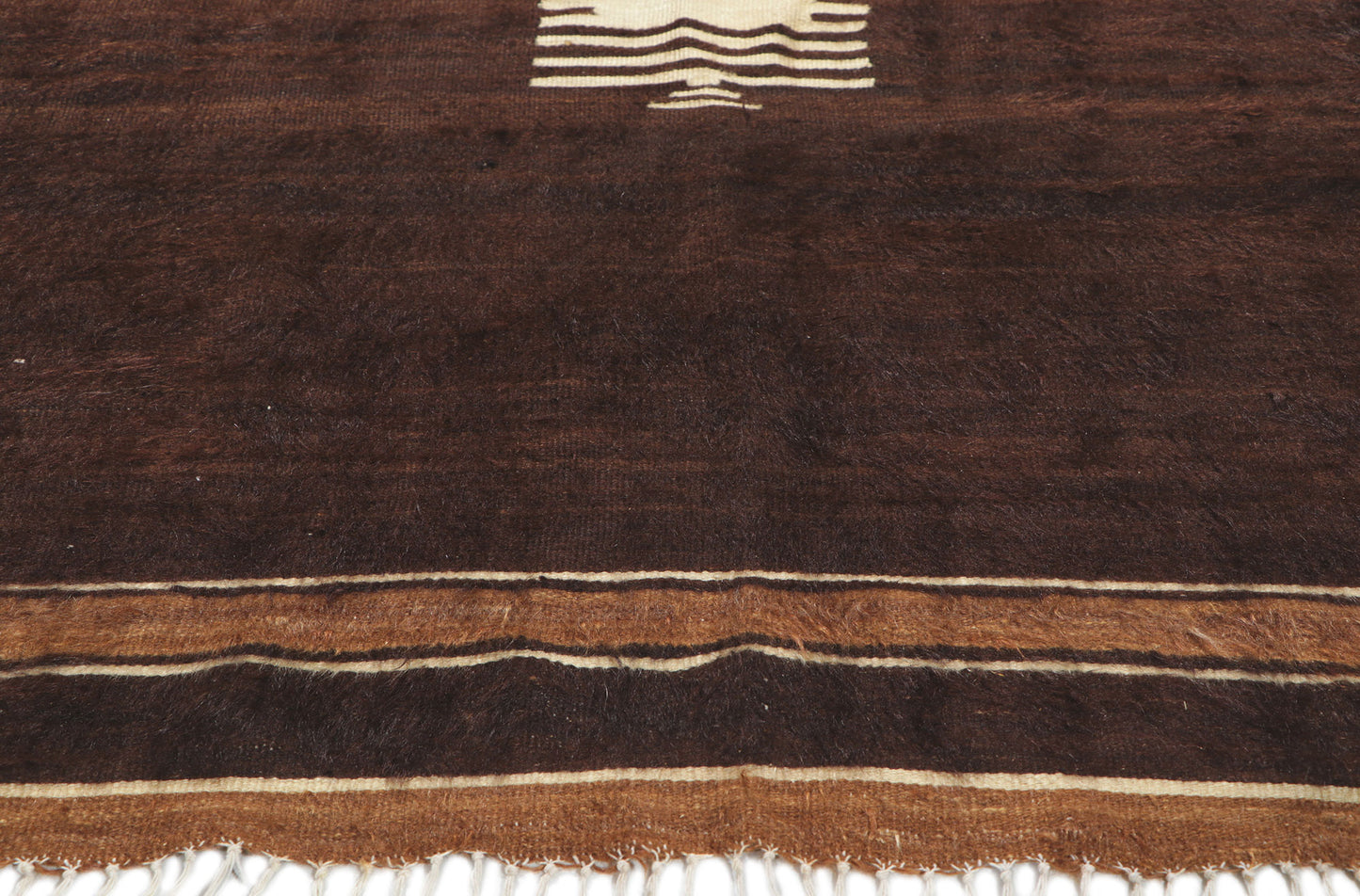
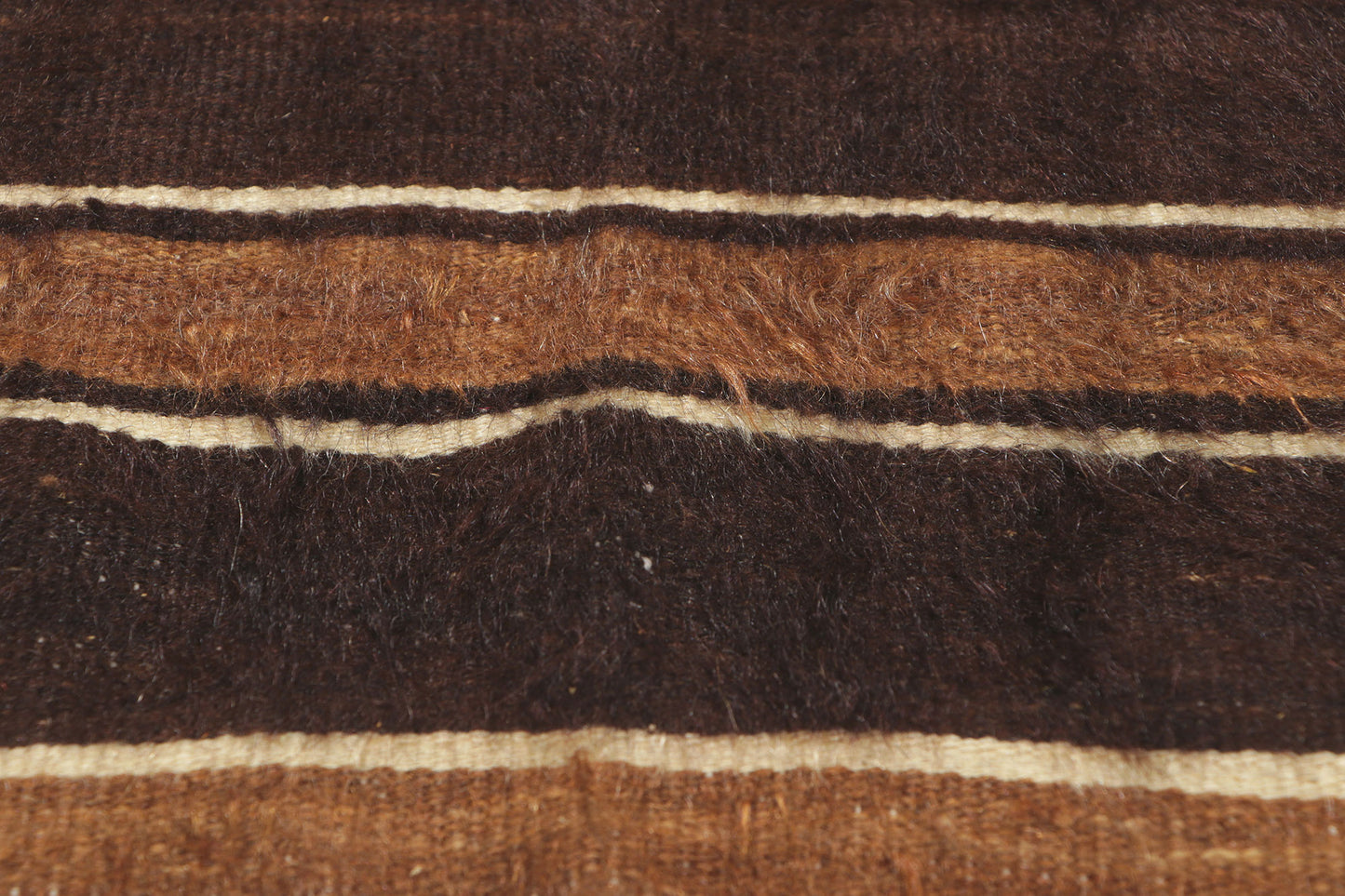
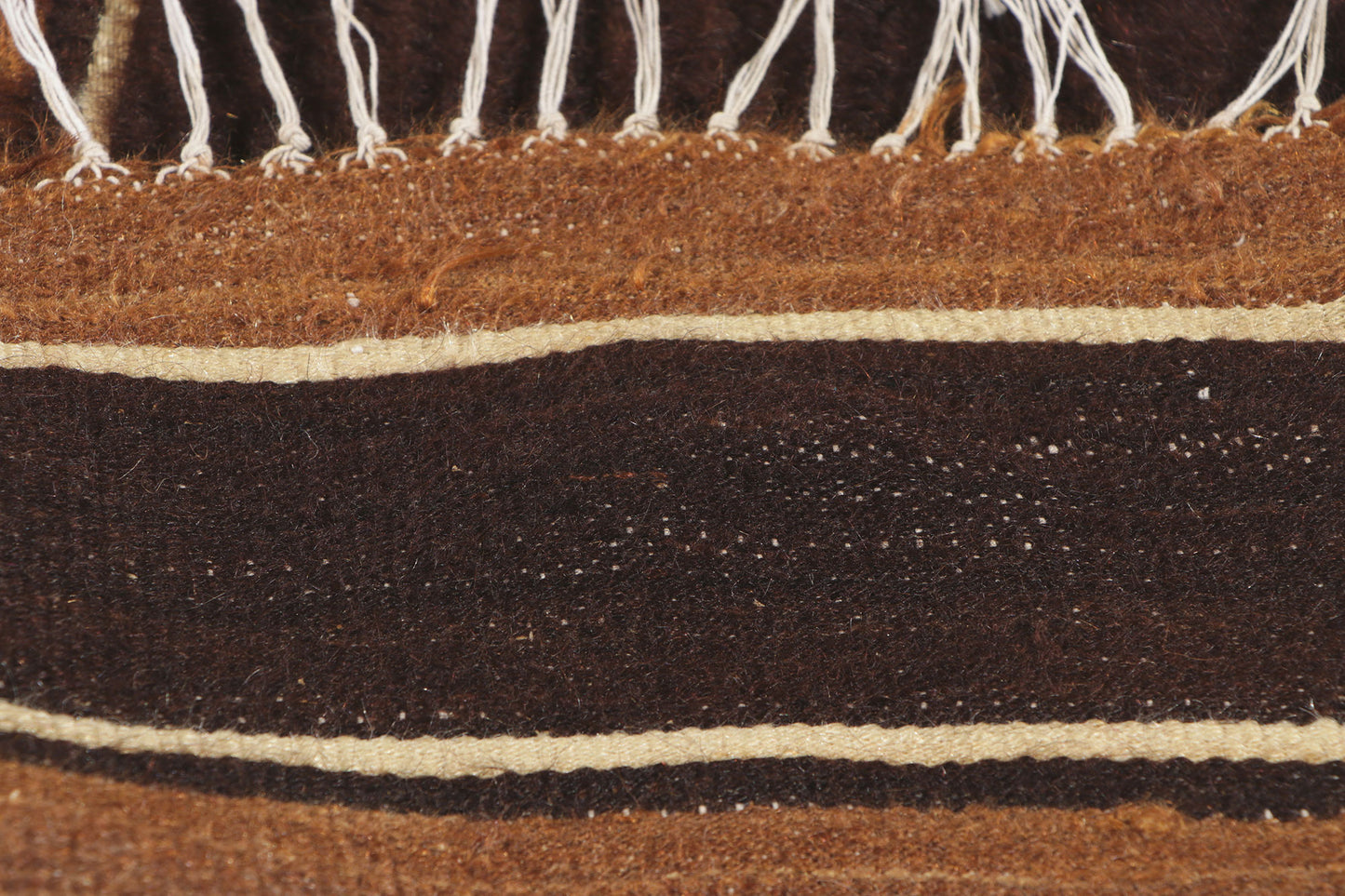
Inquiry
Please send us a message for pricing and questions regarding this product!
Description:-
53854 Vintage Turkish Angora Wool Blanket Kilim Rug, 04'00 x 05'02.
With its shaggy pile, incredible detail and texture, this handwoven Turkish angora kilim rug is a captivating vision of woven beauty. The eye-catching geometric design and earthy colorway woven into this vintage Turkish kilim blanket work together creating a truly unique look. The modern style composition in combination with its cozy color palette can add subtle graphic appeal while forming a warm, relaxed space. Due to an artful balance of functional versatility with subdued ornamentation, this soft kilim rug blanket is capable of a variety of successful design applications
Perfect for a home office, small space, reading nook, foyer, entryway, study, studio, den, bedroom, home library, walk-in closet, stair landing, alcove, mudroom, man cave, children's area, nursery, music room, owners retreat, or several pieces layered in the living room, front room, game room, home theater, or cozy lounge area. Well-suited for a variety of styles: Mid-Century Modern, Tribal, Nomadic, Bohemian, Organic Modern, Japandi, Hygge, Mys, Mysigt, Nordic, Danish Design, Finnish, Belgian, Modern, Contemporary, Eclectic, Modern Mexican, Artisan, Lodge, Cabin, Rustic, Retro, Art Moderne, International, Industrial, Urban, and Loft. Rustic yet refined, this versatile angora wool rug would also complement mountain living for luxury ski chalets, secluded hunting lodges and rustic ranches found in Montana, Colorado, Lake Tahoe, Wyoming, or the Adirondacks.
- Abrash.
- Siirt Blanket Rug
- Hand-woven angora wool.
- Made in Turkey.
Faq
Collapsible content

Do you offer rug-related services?
Yes, Esmaili Rugs offers several services to maintain and enhance your rugs.
Do you have a trade program for professionals?
Yes, Esmaili Rugs has a Trade Program designed for interior designers, architects, and other trade professionals. This program offers exclusive benefits and services tailored to professional needs.
How can I contact Esmaili Rugs for inquiries or support?
You can reach out through the "Contact Us" page on their website. Additionally, Esmaili Rugs is active on social media platforms like Facebook and Instagram, where you can connect and stay updated on their offerings.
Can I schedule an appointment for personalized assistance?
Absolutely. Esmaili Rugs offers concierge appointments with their internationally respected rug expert team. This service is ideal for collectors, interior designers, and anyone seeking personalized guidance.
What types of rugs does Esmaili Rugs offer?
Esmaili Rugs provides a diverse selection of rugs, including Moroccan, Turkish, Persian, Oushak, Chinese, and Tapestries. These are available in various sizes such as small, medium, large, extra-large, runners, round, square, and custom dimensions.















